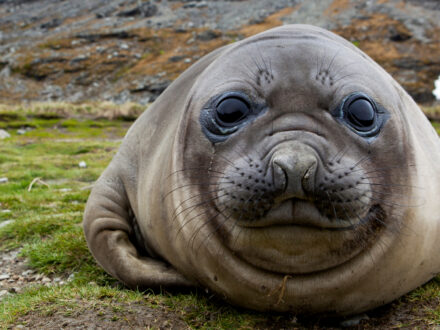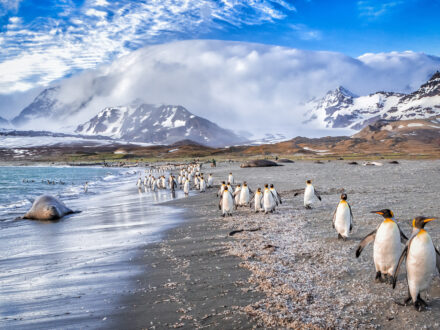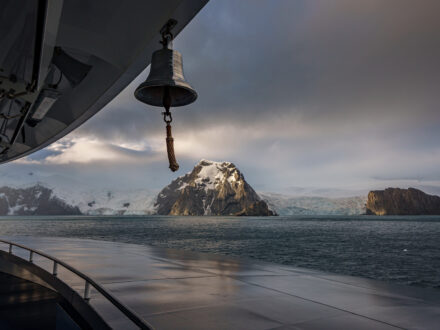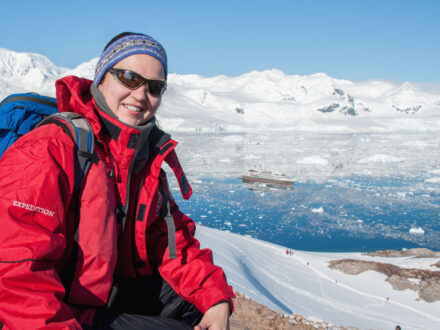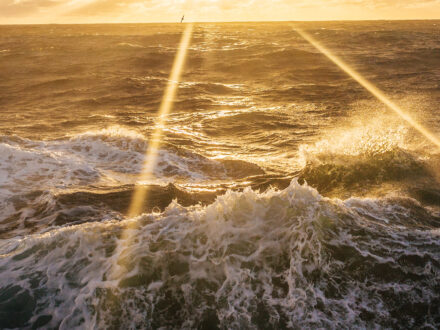Why Visit Antarctica? Top 10 Reasons To Go
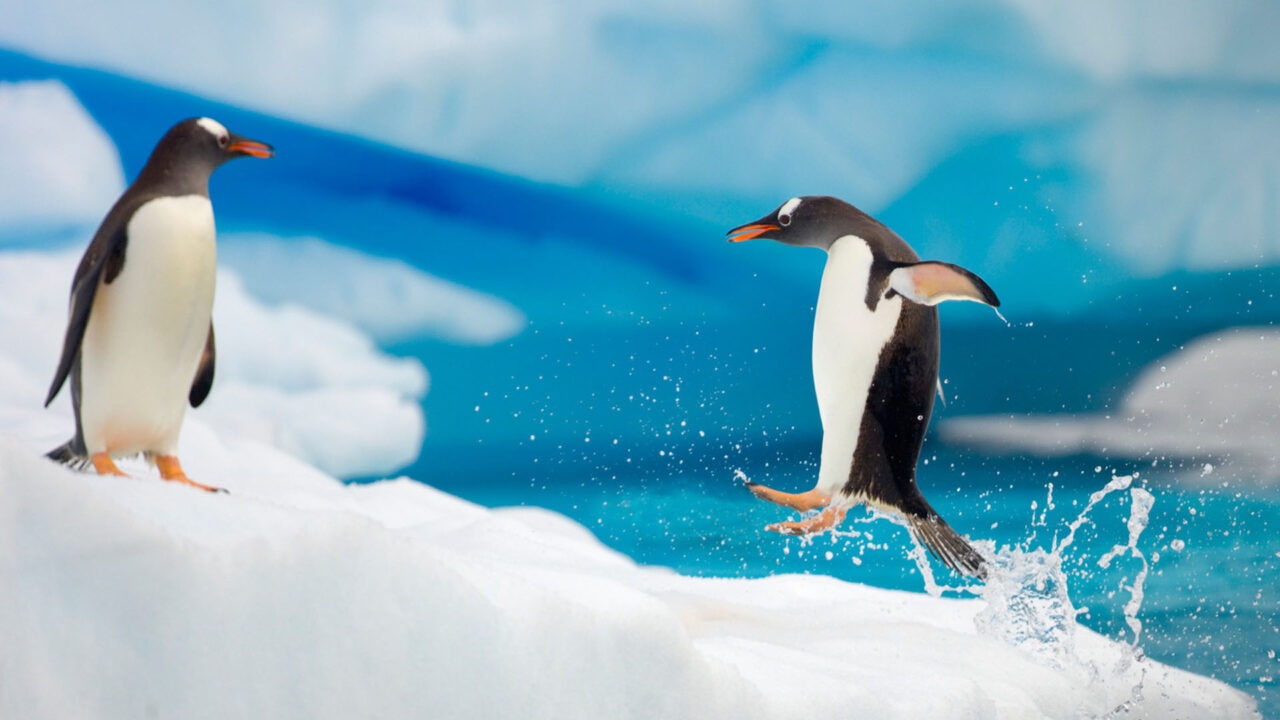
For many, the call of Antarctica—the White Continent—is strong, clear, and irresistible. Perhaps, though, you’re not entirely sure if this remotest of Earth’s landmasses is worth the effort to visit.
Well, we’re surely biased, but we contend it most certainly is! Why do people visit Antarctica? Because it’s easily one of the most extraordinary travel destinations in the world: a “next-level” one, an ethereal one, a realm so exquisitely untrammeled, so starkly beautiful, as to seem straight out of a dream.
Here are ten more concrete reasons why you really ought to put Antarctica on your must-see list.
Top 10 Reasons To Go To Antarctica
1. The Adventure
Few travel hotspots offer the caliber of adventure that Antarctica does. This gigantic, ice-swaddled continent is the greatest terrestrial wilderness on Earth, lacking a permanent human population, staggeringly farflung and—much of the year—staggeringly forbidding.
Simply venturing across the fabled (and sometimes ferocious) Drake Passage is a defining adventure. On and along the White Continent itself, kayak or stand-up paddleboard amid icebergs and whales, dive beneath the ice, camp or ski or snowshoe on flawless snow, and—if you’ve got the skills and mettle—climb back-of-beyond peaks that have seen few if any footfalls. And speaking of: What more adventurous place to set foot than the South Pole?
2. The Wildlife
Without question, Antarctica ranks among the world’s greatest wildlife-viewing destinations. Multiple species of penguins—all utter charmers—provide the quintessential White Continent safari experience. But then there are all of the spectacular seabirds—skuas, petrels, gulls, albatrosses—and the pinnipeds, from Weddell and crabeater seals to hulking elephant seals and formidable leopard seals. These sleek creatures share the waters with a multitude of whales, including baleen giants drawn by epic seasonal krill blooms and multiple varieties of orcas, some of them frighteningly crafty in their seal- and penguin-gobbling acuity.
Throw in the equally fabulous animal spectacles available on the sub-Antarctic islands many White Continent cruises incorporate, and you’ve got an utterly superlative wildlife-watching experience just about guaranteed when you head to the bottom of the world.
3. The History
Never even seen until the 19th century, Antarctica lays claim to hallowed history when it comes to the annals of human exploration. To sail or ski in the footsteps of icons such as Ernest Shackleton, Roald Amundsen, and Robert Falcon Scott—and to visit some of the relics of historical expeditions, remarkably preserved in the frigid, dry climate—is thrilling.
4. The Icebergs & Glaciers
A kingdom of ice, the world’s greatest redoubt of frozen water, Antarctica conjures visions of bygone ice ages and takes the breath away with unreal-looking sculptures of glinting white and blue. To sail amid titanic and contorted icebergs, to see the ivory walls of ice shelves such as the Ross, to gaze out at nunataks piercing like black fangs above glacial expanses—these are visions that’ll haunt, in the very best way possible, your dreams and memories for the rest of your life.
5. The Science
Researchers from all over the world come to Antarctica to study its unique polar environment, scrutinize prehistory through ice cores, and, at once, take advantage of as unpeopled a realm as exists on land while tracking the insidious, inescapable impacts of humanity. Science focused on a spectacular array of topics plays out at the White Continent’s isolated research stations and field sites. On many itineraries, it’s possible to visit such stations as Vernadsky and Port Lockroy, seeing the workplaces of these intrepid scientists firsthand—and maybe even rubbing shoulders with them.
6. The Astronomy
Some of the aforementioned science going down on the White Continent is focused on the cosmos beyond our own planet. There’s no better place for stargazing than Antarctica, where high elevation, luxurious nights, cold, dry, and stable air, and (needless to say) a minimum of light pollution show off the heavens at their finest. Antarctic travelers coming in the “shoulder seasons” of, say, November or March can sample some of that superb skywatching.
7. The Meteorites
There’s also no better spot anywhere on earth for finding meteorites: concentrated, shuttled, and often shoved to the surface by the ice sheet. Tens of thousands of these space-rocks have been found here; some estimates suggest hundreds of thousands more await discovery.
8. The Landscapes & Seascapes
Antarctica’s landscapes (and seascapes) are strikingly beautiful. These include the dune-like sastrugi of the interior, the evocatively bare McMurdo Dry Valleys, the towering heights of the Vinson Massif or Mount Erebus (southernmost volcano on Earth), the craggy continental spine of the Transantarctic Mountains, and the glories of the Antarctic Peninsula, from the ramparts of the Eternity Range to the cliff-cupped, berg-ridden Lemaire Channel.
9. The Geographical Wonders
Geography buffs have a heyday here, needless to say: from crossing the world’s strongest ocean current (the West Wind Drift, traversed via the Drake Passage) to, potentially, clapping eyes on that one and only South Pole.
10. The Isolation & Inspiration
It’s impossible to overstate the power of the Antarctic’s pristine wilderness and vast, precious emptiness. In a crowded and bedraggled world, seeing such vast, essentially untouched spaces is a privilege and an inspiration.
Why You Should Visit Antarctica
Why visit Antarctica? For all of the above reasons, and more. This is a realm that’s impossible to do justice to with words or even pictures. It simply must be experienced in the flesh: feeling the bite of the cold wind, breathing that purest of air, hearing the spouting of whales, the cacophony of penguin rookeries, the bellow of bull elephant seals, the thunderous crash of calving glaciers.
Isn’t it time to see the White Continent for yourself?
Disclaimer
Our travel guides are for informational purposes only. While we aim to provide accurate and up-to-date information, Antarctica Cruises makes no representations as to the accuracy or completeness of any information in our guides or found by following any link on this site.
Antarctica Cruises cannot and will not accept responsibility for any omissions or inaccuracies, or for any consequences arising therefrom, including any losses, injuries, or damages resulting from the display or use of this information.










































